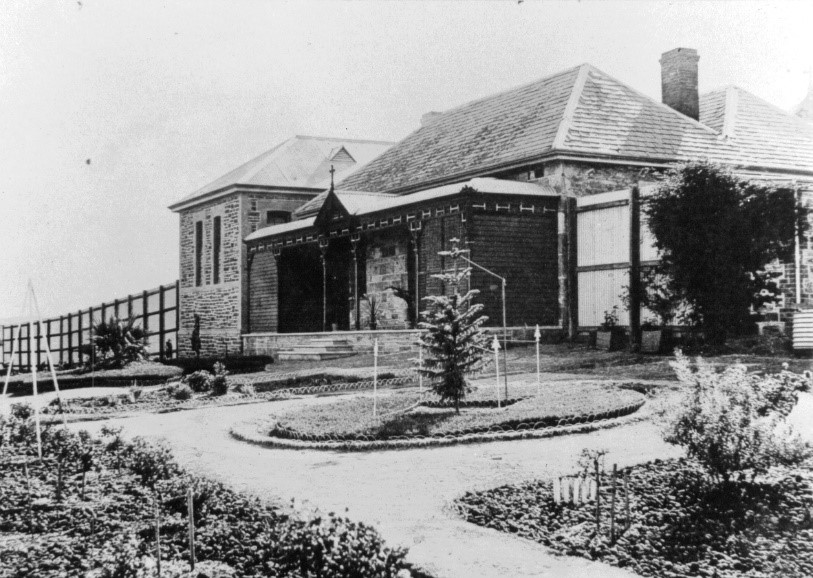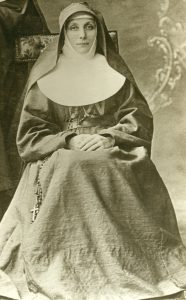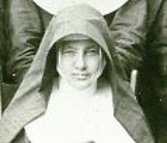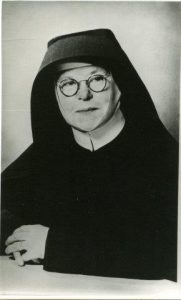
In June 1867, young Mary MacKillop and her companion, Rose Cunningham, made their very first Josephite foundation in the city of Adelaide with a view to providing a catholic education for children whose parents [were] in humble circumstances. [1]
In their bags they carried a manuscript copy of the Rules of the Institute of St. Joseph for the Catholic Education of Poor Children, which Father Woods had written a few weeks earlier.
In it he stressed the importance of their work as teachers but added that, wherever possible, they were also to take charge of Orphanages, to which [might] be added, where circumstances allow[ed], refuges for destitute persons. [2]
In fact, these new Sisters of Saint Joseph were,
Woods had moved to Adelaide some weeks before the Sisters arrived there and, in that time, had been appalled by the poverty and deprivation he had found in parts of the city. In particular, he had noticed that Catholics were well represented among the prison population. Therefore, in spite of the demands of his duties as Director of Catholic Education, he visited the Adelaide Gaol weekly and, whenever possible, celebrated Mass for the prisoners. [4]
It was with these people in mind that he mentioned the gaol or prisoners no less than four times in the Sisters’ Rules. Thus, in article five, he wrote that they were to be ready to go wherever they were sent and that, besides their teaching duties, they were to visit the sick or attend the poor, prisoners, or other afflicted persons.
In article seven on Sunday Observances, he stated that, after fulfilling their spiritual duties, they were to visit parents whose children had not attended school, sick children, prisoners, or those sick in the hospitals.
Then, in article twelve regarding vacations he wrote that:
From the time of their arrival in Adelaide, then, Woods had them visiting the Adelaide Gaol and the Adelaide Hospital every week. In fact, the visitation of these two institutions, both of which then housed some of the poorest and most disadvantaged people in the colony, became the first Josephite ministry not directly connected to their work of education.
One important spinoff from those initial prison visits was the foundation of St Joseph’s Refuge in Adelaide in October 1867 and, several months later, of St Joseph’s Providence, also in the city. The Refuge was intended to be a half-way house for women recently released from gaol while at the Providence the Sisters provided shelter and protection for disadvantaged women of all ages.
Mary MacKillop and her Sisters took prison visitation seriously and as far as possible, carried it on wherever they went. From Brisbane in 1870 Mary wrote of how she and her companions had visited a gaol on the previous Sunday and how, as a consequence, she felt the need of a Refuge for the women. However, the Vicar General refused her request to set one up. [5]
Mary did not give up, however, for some months later she wrote of:

Meanwhile, back in Adelaide the Refuge was progressing well while at the Providence Sister Elizabeth Etheridge was caring for a former prisoner who, because of failing health, had been moved there from the gaol before she had completed her sentence. [7]
Over time, Sisters began visiting prisons in New Zealand and Sydney, while Sister Gertrude Mary Dewe regretted being unable to get to the Gladstone Gaol (South Australia) from her convent in Georgetown, which was some fifteen kilometres away.[8]
In August 1884, Sister Annette Henschke, who was then in charge of the Adelaide Refuge, wrote:
Over time, the Sisters’ regular prison visitation had at least one unexpected outcome. In early 1883, Adelaide Catholics were shocked to learn that thieves had stolen a gold ciborium full of sacred hosts from the Dominican Convent, in the city. The thieves emptied it somewhere in the Adelaide Parklands and made off with the ciborium itself. Everyone despaired of finding those sacred hosts, but:
Then, in 1897, the South Australian Sisters accepted responsibility for the management of a reformatory home for young girl prisoners, that is, for teenage girls who had appeared before the courts.[11] Mary MacKillop, who was visiting South Australia at the time, spent several weeks with the Sisters as they made ready for the arrival of their first inmates.

This institution closed twelve years later, and the girls transferred to a state-run reformatory at Redruth near Burra in the state’s mid-north. In the early 1920s they moved to a Salvation Army run institution near Adelaide. Sister Annette Henschke, who had cared for prisoners and former prisoners for most of her life, maintained an interest in these young women after their move to Redruth and put continual pressure on Catholic Church authorities to provide a church-run home for them. Eventually, her pleas were heeded and in 1930, the Church opened a Catholic Reformatory near the city and invited the Josephites to resume their care of young girl prisoners. They continued in this difficult work until the arrival of the Good Shepherd Sisters in 1942.
Both Josephite and Government papers indicate the sisters did well in this work of prison visitation and care for reformatory schools. [12] In her “History of the Institute” Sister Mechtilde Woods claims that the good done in the prisons was amazing. She cites the cases of two young girls who, as she put it, had given up their evil ways and become models of virtue, loved by all. [13]

Then there was Hugh Fagan, a murderer who was condemned to death. Seemingly, this man was hard to manage, and prison directors begged the Sisters to visit him. Consequently, Mary MacKillop appointed Sisters Monica Phillips and Felicitas Garvey to see him every day. They persevered patiently and gradually he softened and reached the point where he asked to go to confession and receive Holy Communion. They continued their visits until the day before his execution on 15 April 1878 but were refused permission to attend that event. Instead, one of the local priests stood with him to the end. [14]
Over the years, a succession of sisters has carried on this ministry. In South Australia Sister Ethelreda Clark, who died in May 1962 aged 81 years, became a highly respected prison visitor. Like her Josephite predecessors, she spent many hours with men condemned to death and their families. Several of her protégés had their sentences reduced for good behaviour and, thanks to her influence, they did well in later life.
Today, Sisters in different parts of the Congregation still carry on this good work in the spirit of their founders, Mary MacKillop and Julian Tenison Woods.
Marie Foale rsj
Footnotes:
[1] Fr JET Woods, Rules of the Institute of St. Joseph for the Catholic Education of Poor Children, Southern Cross Office, Adelaide, 1868, Article One.
[2] As above.
[3] Woods, Rules, Article Thirteen.
[4] Sr Mechtilde Woods, “History of the Institute”, unpublished ms, p. 25. RSJ Archives, North Sydney, 006/010
[5] Mary MacKillop (henceforth MM) to Woods, 8 February 1870.
[6] MM to Woods, 18 September 1870.
[7] Sr Elizabeth Etheridge to MM, 5 December 1870.
[8] Sr Josephine Carolan to MM from Sydney, 7 April 1880; Sr Teresa Maginess to MM, from Newton, Auckland, New Zealand, 6 May 1884 & 27 July 1884; Sr M. Ignatius Griffin to Josephine Carolan from Newton, 11 May 1884; Sr Gertrude Mary Dewe to MM from Georgetown SA, 5 November 1882.
[9] Sr Annette Henschke to MM from the Refuge, Norwood, 27 August 1884.
[10] Catholic Monthly, April 1883, p. 41.
[11] MM to Gertrude Mary Dewe from the Reformatory, St John’s via Kapunda, 17 May 1897.
[12] State Children’s Council, Annual Reports, 1899-1909. SLSA.
[13] Sr Mechtilde Woods, “History”, p. 25.
[14] Legend has it that Mary MacKillop was the one who visited and prayed with Mr Fagan. However, while she may have made the initial contact, her being with him at the end was impossible for, after doing a prolonged visitation of country convents n 1877, she was at home in Adelaide only from late November 1877 until she left for Port Augusts on 8 March 1878 to be with the dying Laurentia Honner. She stayed on for a week after Laurentia’s funeral on 12 March 1878 ( Sr Stanislaus Punyer, in Memories of Mary by those who knew her, Sisters of Saint Joseph 1925—1926, John Garratt Publishing, 2010, p. 21.) After that, she scarcely had time to get back to Adelaide to catch the boat for Brisbane on 23 March. (Barry Evans, “Index of Mary MacKillop’s Journeys,” unpublished ms. Josephite Archives, North Sydney.)
